Cove and John Ashram’s Mahasivaratri celebrations include dedication of 50-foot tall statue of Lord Siva, fire worship, speeches and more
By Paras Ramoutar, Guyana
Thousands of devotees of the guyana Sevashram Sangha paid obeisance to Lord Siva on Mahasivaratri, February 28/March 1, at their Cove and John Ashram just south of the capital city of Georgetown. It was an extra-special day for the 125 students of the ashram’s recently rededicated and renamed Hindu College and Institute of Technology. One part of the celebration had concluded two days earlier—the formal prana pratishta (consecration) of the 50-foot-tall Lord Siva statue just completed at the ashram’s entrance. At the request of Swami Parameshananda, originally of Guyana and now head of the America Sevashram Sangha in New York, Hinduism Today sent me to the country from Trinidad to cover the events, which went on all day and ended early the following morning.
The Hindu College was established in 1955 by Swami Purnananda, a direct disciple of Swami Pranavananda (1896–1941), founder of Bharat Sevashram Sangh in 1917 in undivided Bengal. Swami Purnananda had previously spent time in Trinidad (see bit.ly/Purnananda for his full story). He or his disciples founded branches of the Sangh in Trinidad, Guyana, US and Canada. He established the school that eventually became the Hindu College to provide a good education to local youth, nearly all children of farmers. The former president of Guyana, Bharat Jagdeo, once taught at the school. Rajkumarie Singh has been its principal for the last 50 years.
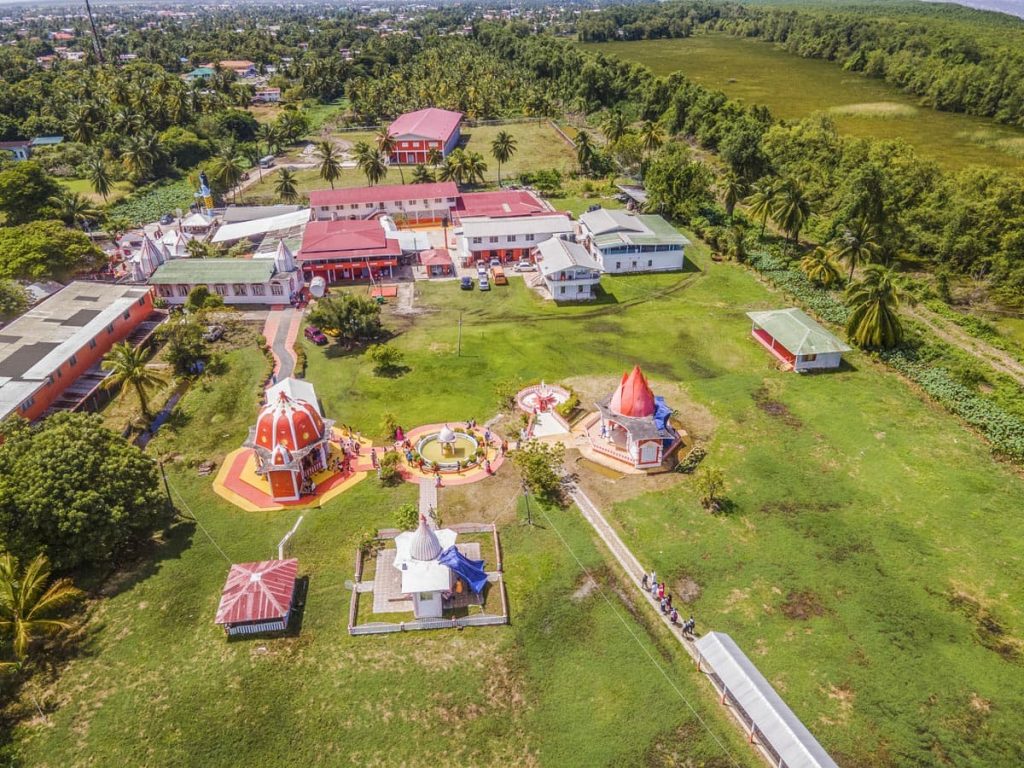
A few years ago, the Jay and Sylvia Foundation of New York developed an ambitious plan to establish a computer technology department by adding a second floor to the existing building on the ashram grounds. The foundation was established by Jay and Sylvia Sobraj along with Nardeo Singh and Sravan Budhu, all of Guyanese origin and now in America. Swami Parameshananda got wind of the plan and was instrumental, along with Lake Singh of Canada, in getting it accomplished in record time.
The multi-million-dollar project was formally opened at the beginning of the school year in September, 2021. It has a state-of-the-art computer center focused on software, hardware and graphic technology. It is intended to prepare students for further training as coders, data security analysts, hardware engineers and Internet professionals of all types. As an added bonus, the local students now have free access to the Internet and can connect with loved ones and families around the world.
To energize the new center, the ashram’s regular Sunday morning worship and fire ceremony was shifted from the nearby ashram to the new second-floor hall (seen in the photos on page 51).
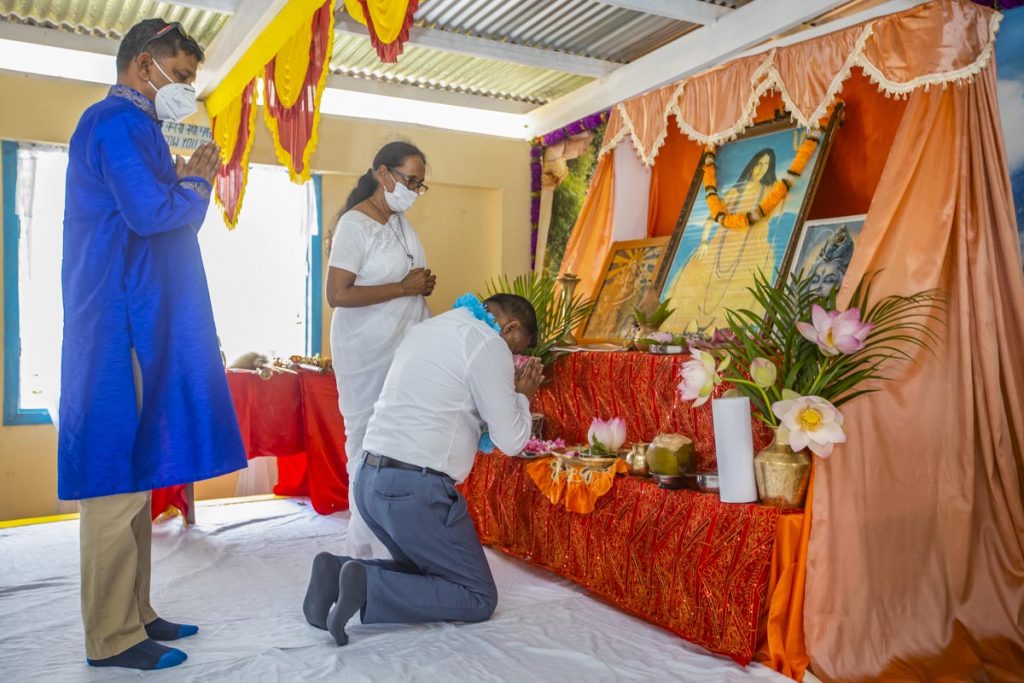
Principal Singh explained her approach: “As a teacher, I worked with getting the values right, such as punctuality, regularity, adherence to truth, believing in one’s self, honesty, integrity and just hard work to realize one’s dream.” She emphasizes nutrition and exercise as pivotal to a child’s progress. Each day begins with reading assignments which she says have helped tremendously.
Mahasivaratri Day and Night
The celebration of Siva’s Great Night began at 5:30 in the morning with arati worship at the shrine to their founding guru, Swami Pranavananda. This was followed by procession with the tulsi plant and chanting of the Hare Rama/Hare Krishna Mantra. The students arrived at 8:30 in their school uniforms—though there were no classes being conducted—to participate in the day’s events, most of which were held in the main hall. There was further worship of Swami Pranavananda, bhajana and havana (fire worship), as well as speeches by the present head of the Sangh in Guyana, Swami Shivasankar, and local community leaders.
The students participated in the first hour of a four-hour Ramayana satsang, then dispersed at 3pm. The formal Mahasivaratri pujas of the night began at 6pm in a sheltered area near the new Siva statue. There were more havanas, guru pujas and arati and the continuous chanting of “Om Namah Sivaya.” As is traditional, the worship was repeated every three hours through the night, ending around 5:30 on the morning of March 1.
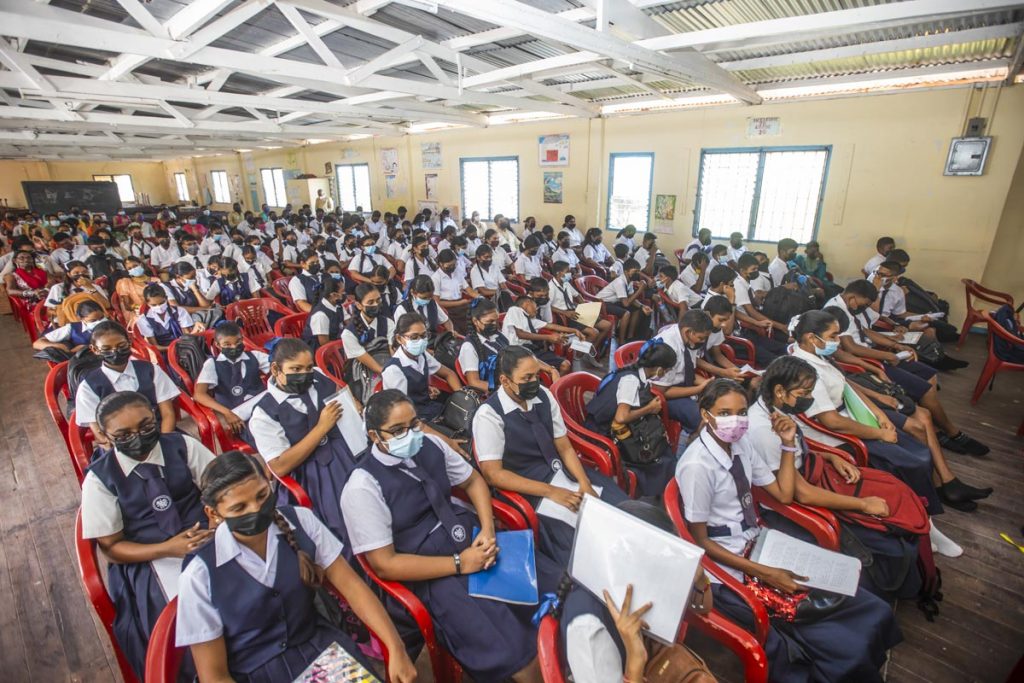
An aura of spirituality and reverence hovered over the filled Sangha, as the continuous flow of devotees—elderly men and women, mothers and fathers, students and infants thronged the hall. It was a sacred environment reflective of the Indian diaspora, which landed here in May 5, 1838.
Swami Sivasankar stated in his address to the students that Mahasivararatri is one of the biggest festivals of Hindus. “During this day, the culture observes it by remembering Lord Siva and chanting prayers, fasting, doing yoga and meditating. Ethics and the virtues of self-restraint, kindness to others, forgiveness and the discovery of Lord Siva within oneself are the primary focuses and ultimate goals.
“Devotees offer water, milk and flowers to Sivalinga and worship the Hindu God of Destruction. Siva is considered the ideal husband, and unmarried girls and women pray for a husband like Him. The temple is filled with the sound of bells and shouts of ‘Shankaraji Ki Jai’ and ‘Mahadevji Ki Jai,’ as devotees repeat five rounds and then pour water on the Sivalingam.”
He elucidated three reasons to celebrate Mahasivaratri. First, it is the day in the Hindu calendar when the unmanifest, absolute formless God Sadasiva appeared in the manifest form of the Lingodbhava Murti exactly at midnight. Second, it is the ritual wedding anniversary when Lord Siva married Devi Parvati, and that Siva minus Parvati is pure, “Nirgun Brahman.” Third, it is a day of thanksgiving to the Lord for protecting mankind from annihilation by drinking the poison released during the churning of the ocean, as narrated in the Puranas.

Swami said that according to the Siva Purana, Mahasivaratri puja involves six steps: taking a bath which purifies the soul, mind and body; bathing of the Sivalinga with holy water; then milk, then honey; applying vermillion paste and concluding with the offering of fruits and flowers given in hope of obtaining a long life and satisfaction of desires.
Swami Pranavananda’s parents, as Swami Sivasankar recounted, underwent severe suffering in Bajitpur, a remote corner of what is now Bangladesh. As ardent devotees of Lord Siva, they undertook hard penance and rigorous austerities to propitiate the Lord, who in a dream conferred upon them a great boon by granting them a deeply religious son. When he grew up, that son became the disciple of Baba Gambhirananthji and eventually attained Supreme Realization.”
Also speaking at the event was Guyana’s attorney general, Anil Nandlall, who recounted for the students the huge challenges their forefathers faced when first coming to the country. Yet, even cut off from India, they still managed to preserve Hinduism because they recognized the inherent value of its religious practices and were able to put its principles into practice in their daily life.
Deodat Indar, minister of public works, inspired the students by saying Mahasivaratri is a “day to raise one’s consciousness, to experience the divine presence within oneself to easily achieve personal success in the external world.” He suggested they pray “for the ability to correct ourselves—something we may not want to do, for fairness in our dealings with other people, instead of just thinking what is best for us, and we must pray to take the right path in life.” His was an apt concluding speech for the proceedings.
New Siva Statue Consecration
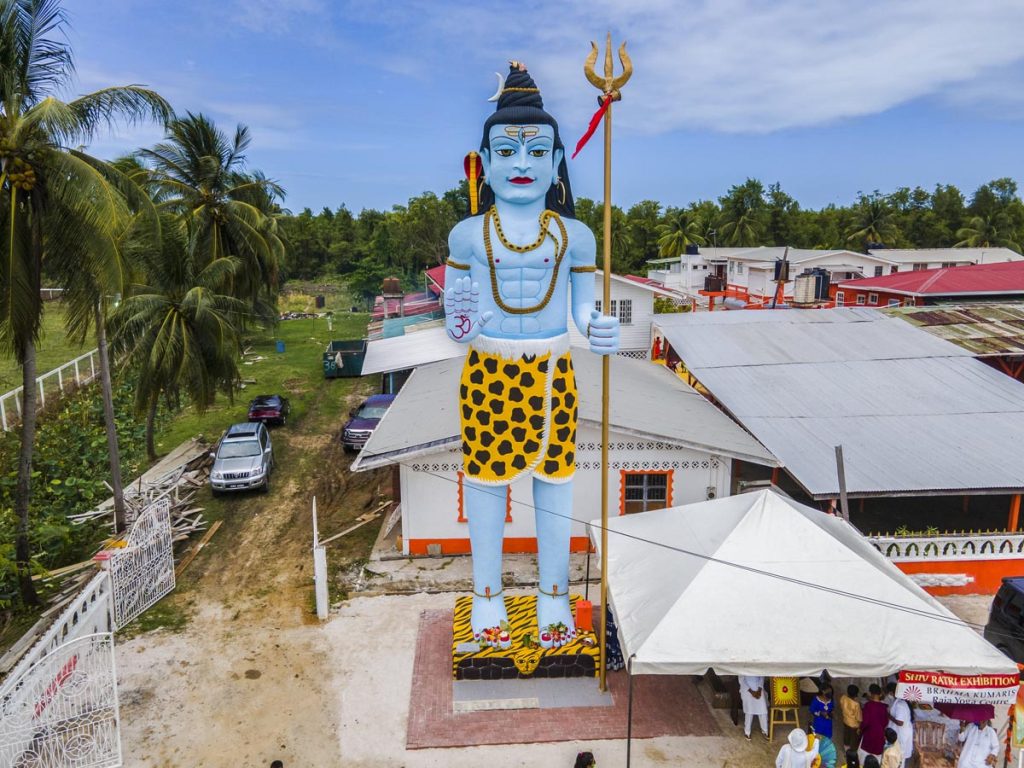
The resplendent 50-foot murti of Lord Siva now standing in front of the Cove and John Ashram welcomes every devotee and well wisher and also blesses passersby on the nearby main highway to Guyana’s south. The statue was the inspiration of Khemnauth Sookram, who in 2018 built a 80-foot Lord Hanuman overlooking the Essequibo River.
Sookram’s association with the Sangha began with a chance meeting with Swami Parameshananda in 2006 in New York. Their first project together was a food aid program for needy residents of Sookram’s native village of Parika in Guyana. The food aid was later expanded to include the Hindu College boy’s dormitory. After completing the Hanuman statue, Sookram requested permission to erect a Siva statue at Cove and John, saying, “I am doing this for Guru Maharaj and no one else.” The concrete murti took some six months to complete.
The statue’s consecration was performed by Pandit Damu Prashad along with Swami Parameshananda and the Sookram family. It began with a small fire worship ceremony and then the prana pratistha rites to infuse life into the image. In the process, Pandit Prashad and others climbed the scaffolding to reach the top of the murti, where they touched the Deity’s nose, mouth, eyes and ears while chanting mantras.
In an interview, the reserved Mr. Sookram would only say that he has been “gifted with a human body and the murti is a gift to God, inspired by Swami Parameshananda. This murti allows me and everyone to always remember Lord Siva.” He prayed that this murti would help give the whole world everlasting happiness in this age of Kali Yuga.
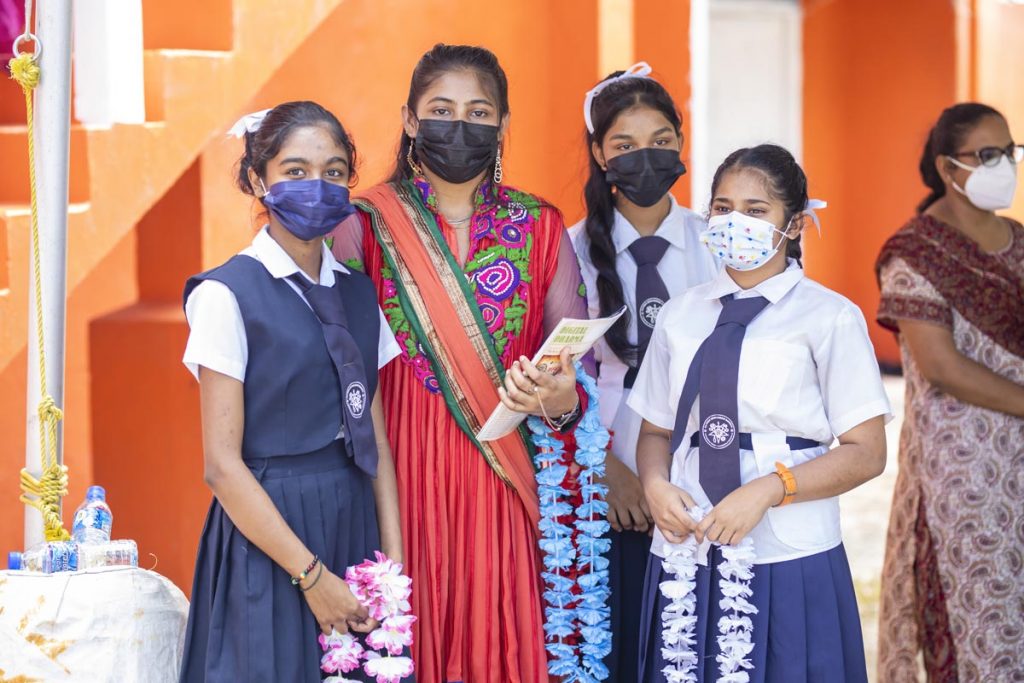
About the Author
Paras Ramoutar HBM, JP, BA, APR, ABC is an international journalist/communications consultant. He writes on the Indian diaspora, culture and Hinduism for a network of national and international publications, and has received numerous awards for his work as a public affairs commentator, community empowerment and national development. Email: paras_ramoutar@yahoo.com
